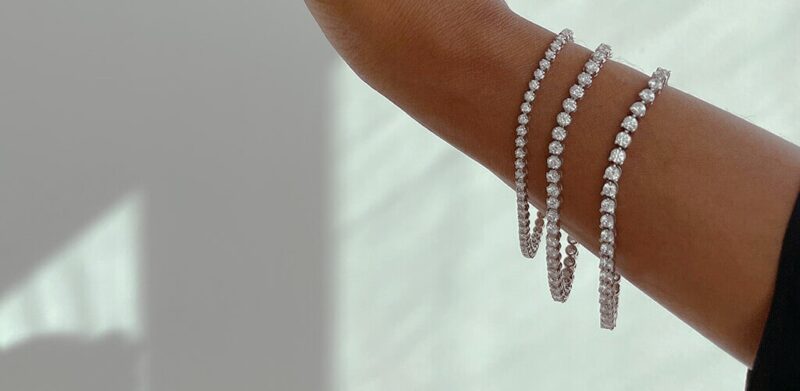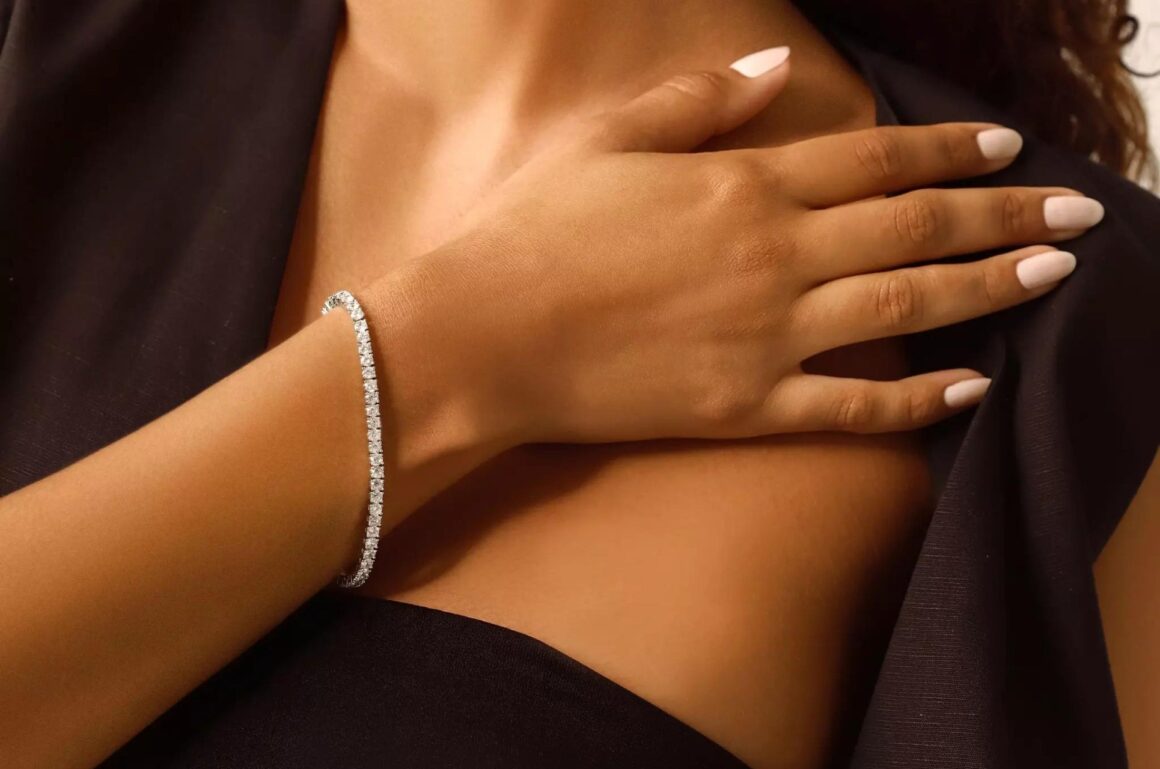Buying your first diamond tennis bracelet is exciting, but it can also feel overwhelming. With so many styles, diamond qualities, price points, and design details to consider, it’s easy to make mistakes—especially if you’re new to fine jewellery.
The good news? Most of these mistakes are completely avoidable once you know what to look for. In this guide, we’ll walk through the most common errors first-time buyers make and how you can shop smarter, save money, and choose a bracelet that lasts a lifetime.
Mistake 1: Choosing the Wrong Bracelet Size

One of the most common issues first-time buyers face is selecting the wrong size. A tennis bracelet that’s too tight will feel uncomfortable, and one that’s too loose may twist, snag, or even fall off.
How to avoid it:
Measure your wrist and add 0.5 to 1 inch for the perfect fit. The bracelet should slide slightly but never flip over completely. If you’re unsure between two sizes, choose the smaller one for safety—most designs have a bit of natural movement.
Mistake 2: Ignoring Diamond Quality (The 4Cs)
Many new buyers focus only on carat weight and forget about diamond quality. This leads to bracelets with dull or uneven-looking stones.
The 4Cs—cut, color, clarity, and carat—play a huge role in how your diamond tennis bracelet looks and sparkles.
How to avoid it:
- Cut: Choose well-cut diamonds for maximum brilliance.
Color: Grades G–I offer great value and appear bright and white. - Clarity: SI1 or VS2 stones are ideal for bracelets—they look clean to the eye without breaking the budget.
- Carat: Remember total carat weight is spread across many stones. Balance size with quality.
A bracelet with high-quality small diamonds often looks more stunning than one with bigger, lower-quality stones.
Mistake 3: Overlooking the Flexibility and Movement of the Bracelet
A diamond tennis bracelet should drape smoothly across your wrist. Cheaper or poorly made bracelets tend to feel stiff, which means they may break more easily.
How to avoid it:
Gently hold the bracelet between your fingers and let it hang. A high-quality tennis bracelet will fall naturally, with even flexibility between links. If it feels rigid or uneven, avoid it.
Mistake 4: Choosing the Wrong Metal for Your Lifestyle

Your metal choice affects durability, appearance, and long-term maintenance.
Many first-time buyers choose a metal based only on aesthetics, without considering the wear and tear their bracelet may face.
How to avoid it:
- White gold is elegant but needs replating over time.
- Yellow gold is classic and durable.
- Rose gold offers a warm, romantic tone.
- Platinum is the strongest and ideal for daily wear.
Think about your daily routine. If you want maximum durability, platinum is often worth the investment.
Mistake 5: Not Prioritising a Strong Clasp
A weak clasp is one of the biggest risks when buying a diamond tennis bracelet. If the clasp fails, you could lose the entire bracelet—and its diamonds—in seconds.
How to avoid it:
Choose a bracelet with a double-lock clasp or an additional safety latch. This small feature makes a huge difference in security, especially for higher-carat bracelets.
Mistake 6: Overpaying Due to Poor Research
Diamond tennis bracelet prices can vary dramatically between sellers. First-time buyers often overpay because they don’t understand pricing standards or diamond grading reports.
How to avoid it:
- Compare prices from multiple reputable jewellers.
- Check for certification from trustworthy labs like GIA or IGI.
- Understand what affects price: diamond quality, metal weight, craftsmanship, and brand.
A high price doesn’t always mean high quality. Look closely at the details.
Mistake 7: Misunderstanding Carat Weight

Many buyers assume a bigger carat weight automatically means a better bracelet. But total carat weight (TCW) can be misleading.
Two bracelets with the same TCW can look completely different based on diamond size, number of stones, and quality.
How to avoid it:
Focus on overall balance. A bracelet with smaller, well-matched diamonds can look more uniform and elegant. Larger stones require higher clarity and cut to look flawless.
TCW is just one piece of the puzzle—don’t let it be the only deciding factor.
Mistake 8: Buying From Unverified or Unreliable Sellers
With the rise of online shopping, more people are buying fine jewellery online. But this comes with risks if the seller is not reputable.
How to avoid it:
Always buy from a jeweller who:
- Provides clear diamond grading
- Shares close-up images and video
- Has transparent return policies
- Offers authenticity certificates
- Has verified customer reviews
A trustworthy seller will happily answer questions and offer guidance.
Mistake 9: Forgetting Long-Term Maintenance
Even the best diamond tennis bracelet needs care. Without proper maintenance, diamonds can loosen, metal can thin, and the bracelet may lose its brilliance.
How to avoid it:
- Clean your bracelet at home every 1–2 weeks.
- Avoid wearing it during exercise or heavy activities.
- Store it in a padded jewellery box.
- Get professional inspections once or twice a year.
Regular care protects your investment and keeps it shining beautifully.
Mistake 10: Not Trying the Bracelet On

Pictures don’t always show how a bracelet sits on the wrist. Some look great in photos but feel too heavy, too flimsy, or twist awkwardly.
How to avoid it:
If possible, try the bracelet on. Notice how it drapes, how it feels, and how secure the clasp is. If shopping online, check for clear videos or a virtual try-on tool.
Final Thoughts
A diamond tennis bracelet is a stunning, timeless piece worth taking the time to choose carefully. By avoiding these common first-time buyer mistakes, you’ll make a more informed decision, get better value for your money, and enjoy a bracelet that sparkles beautifully for years to come.

